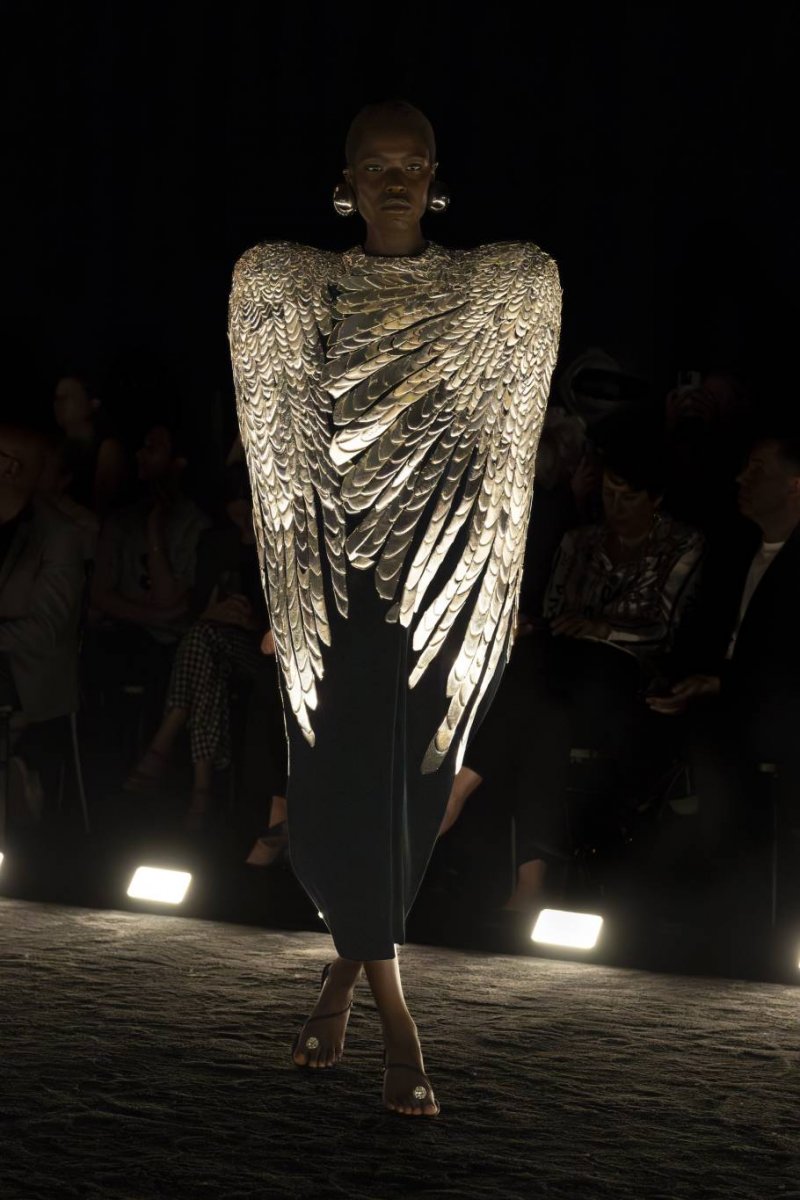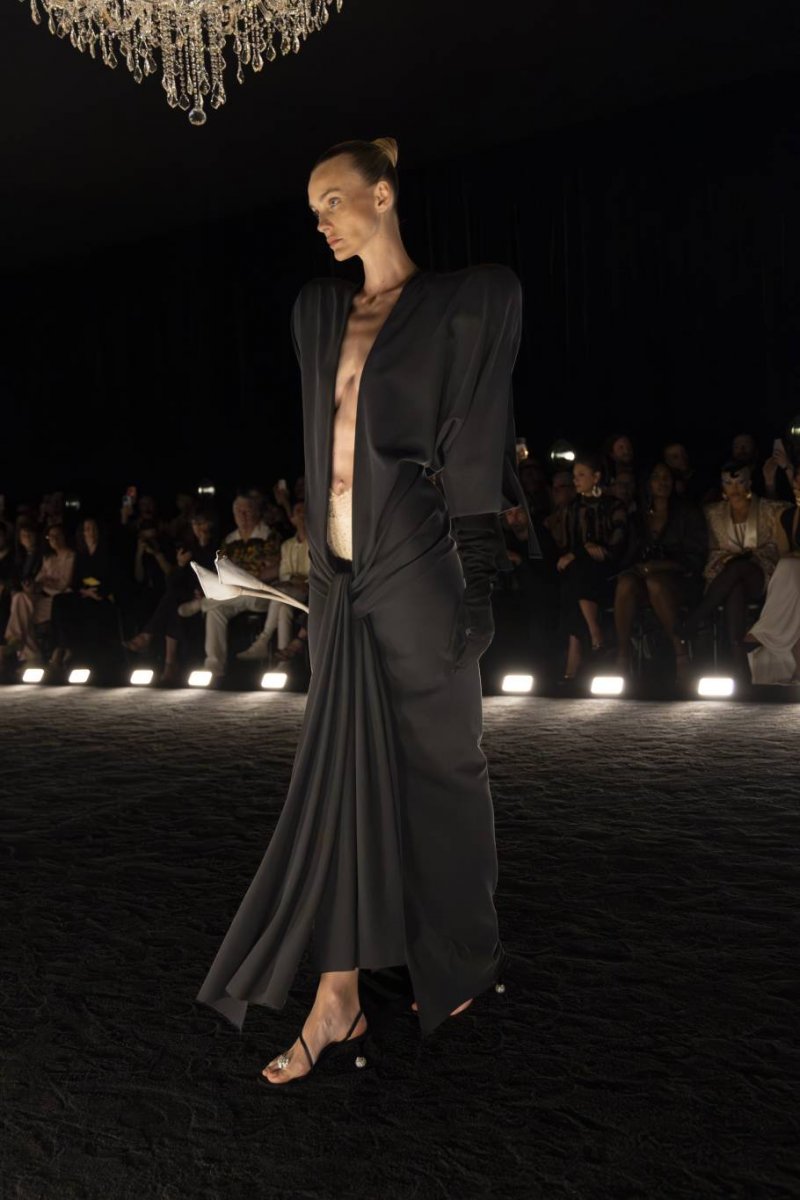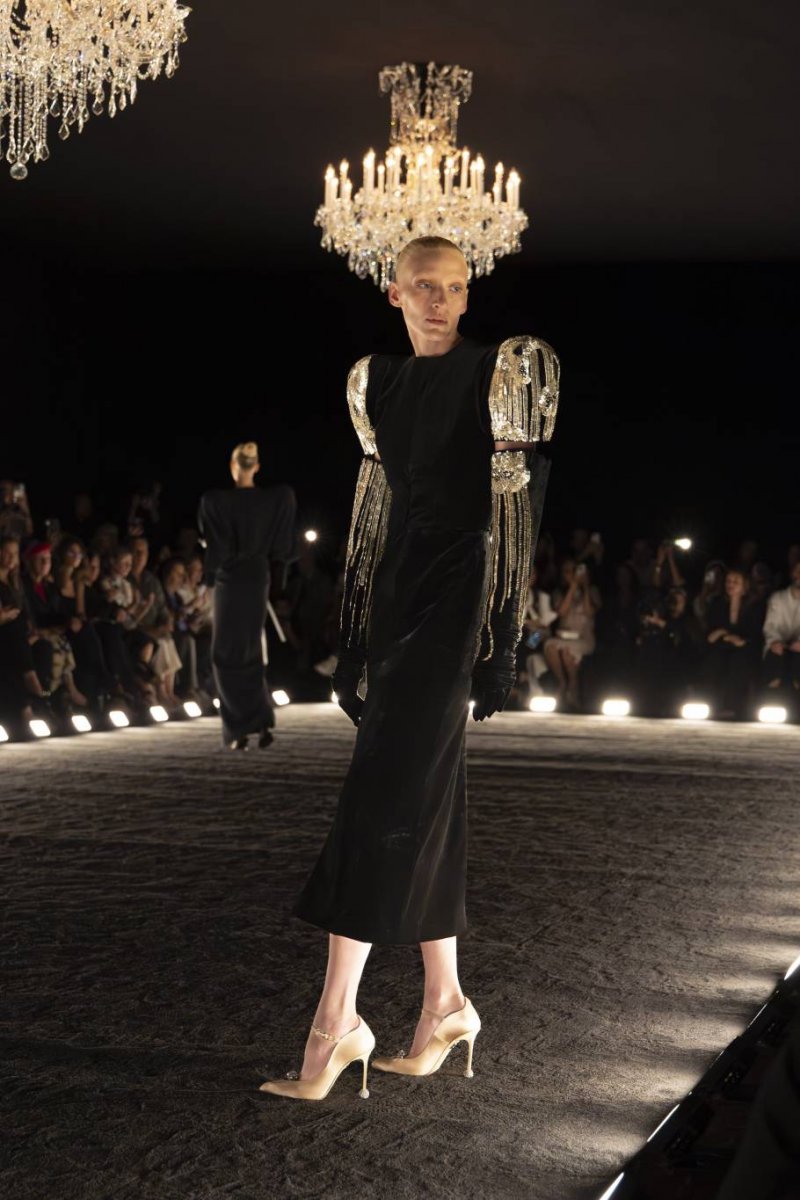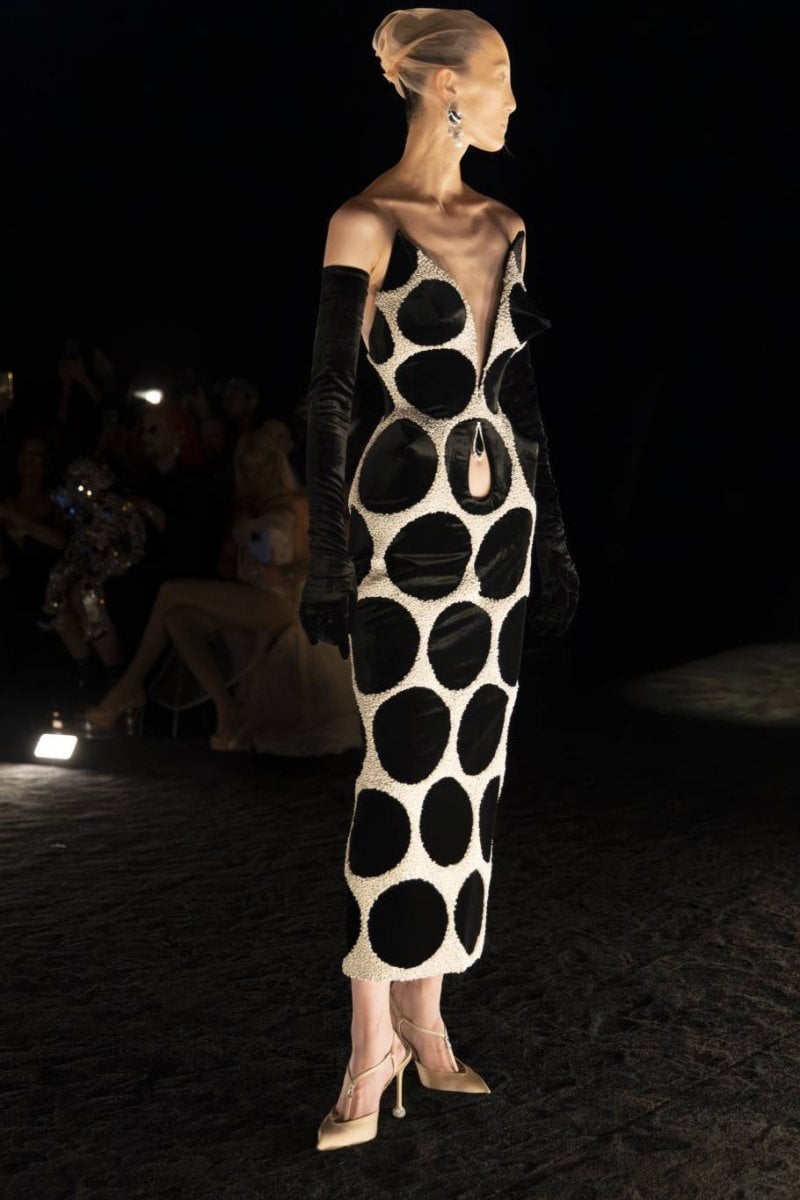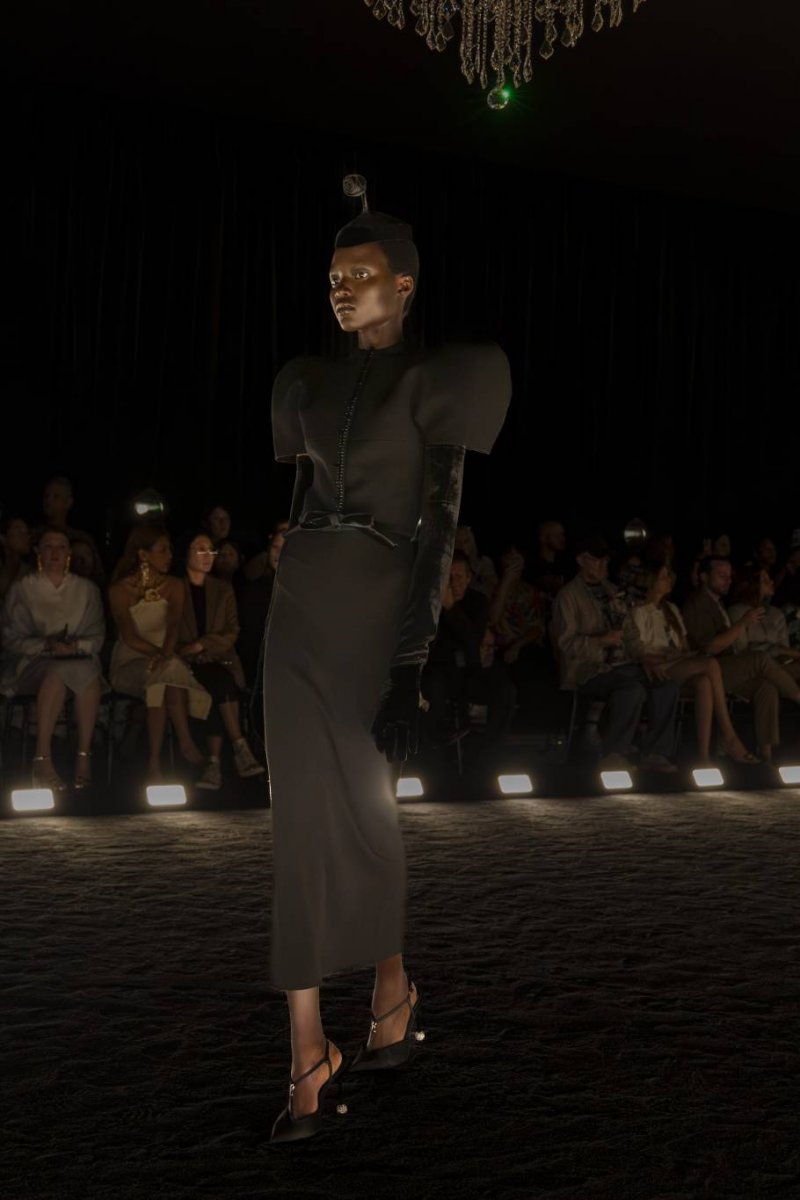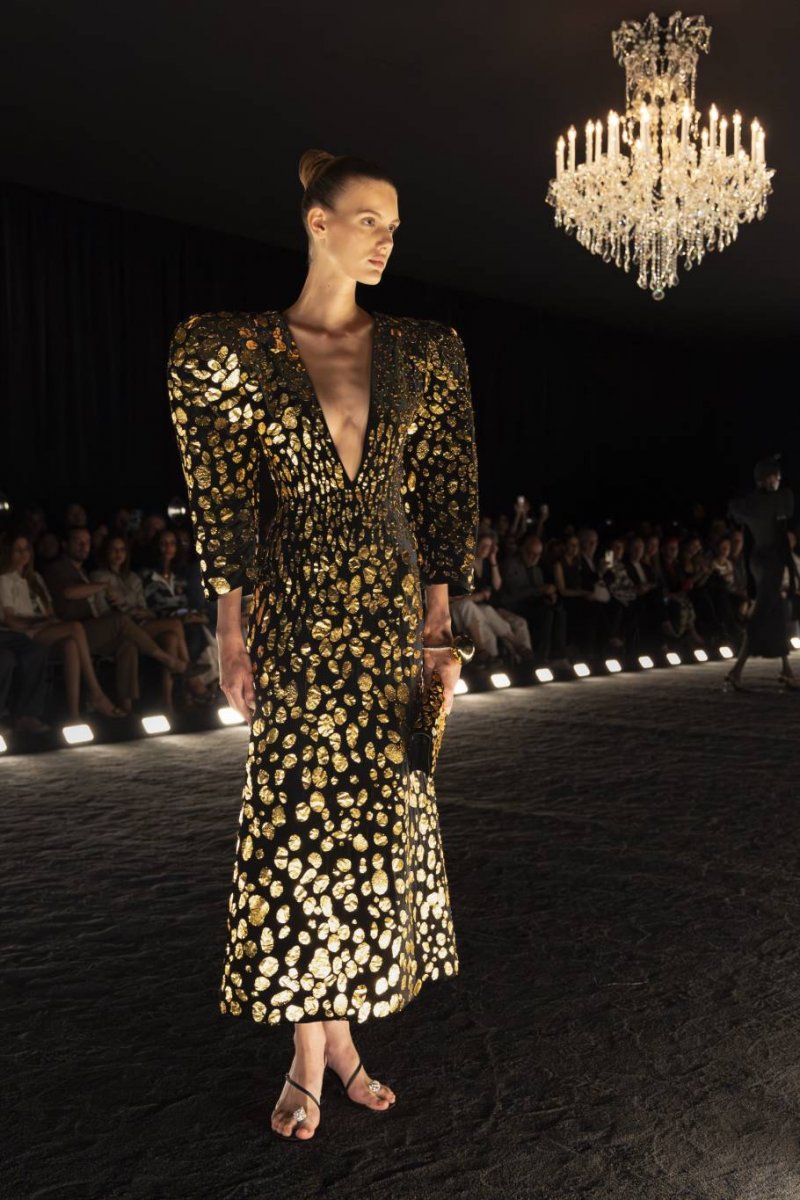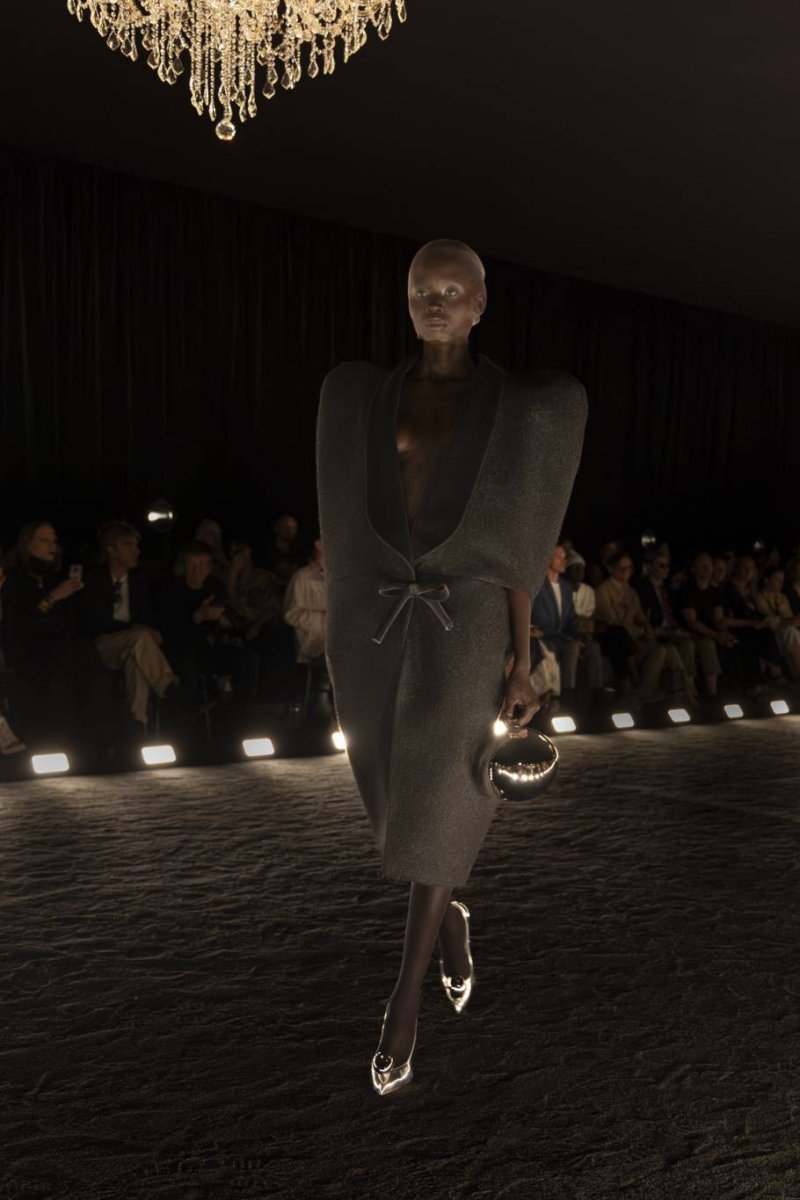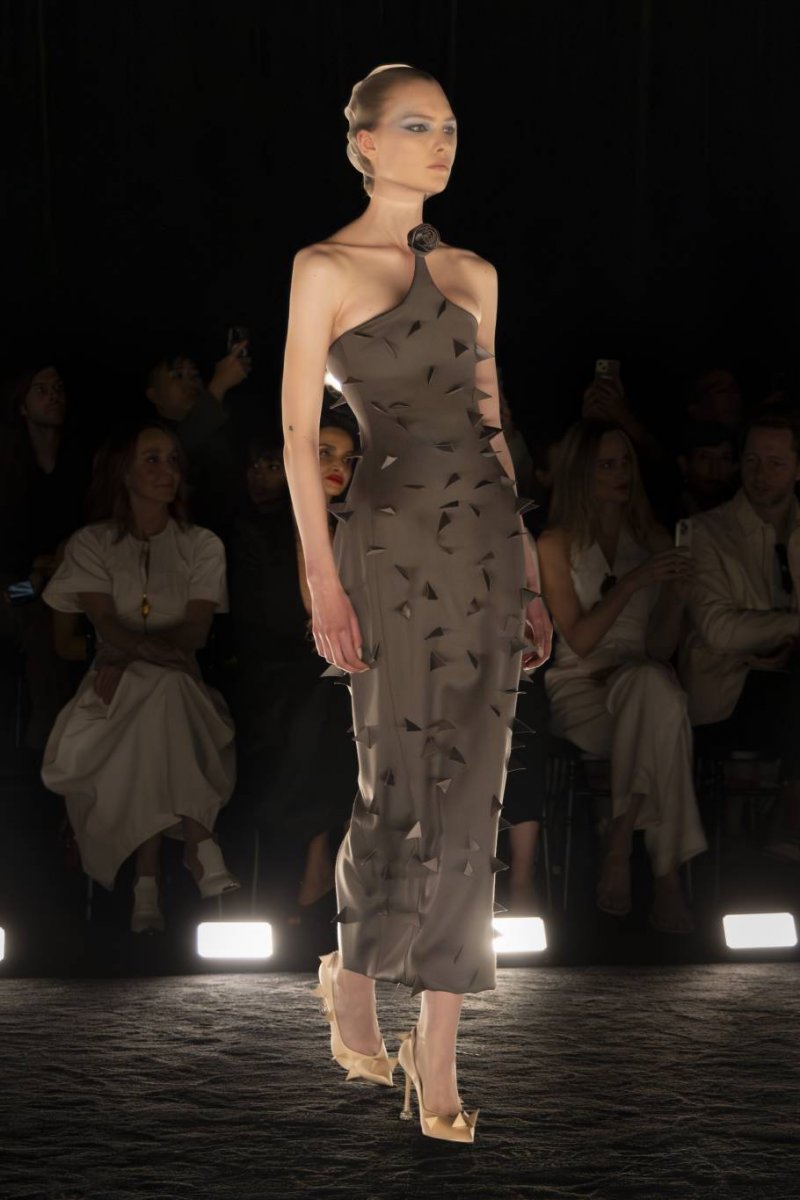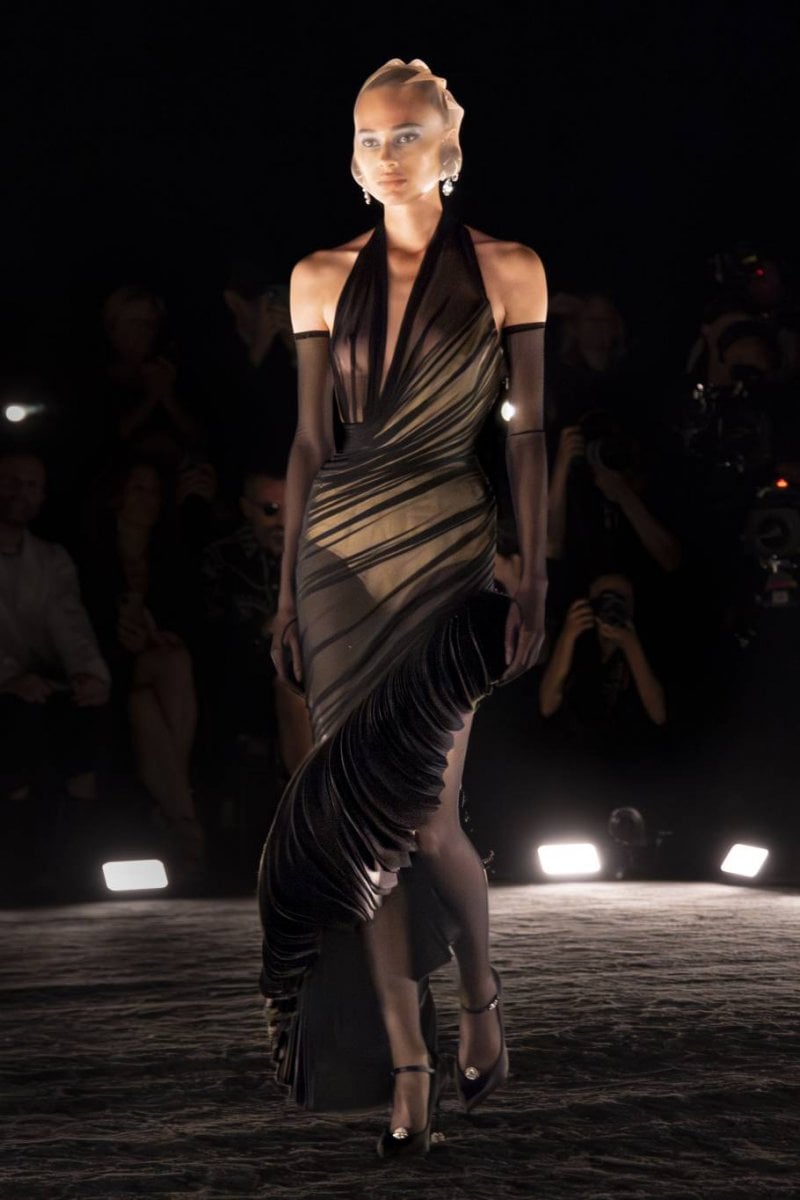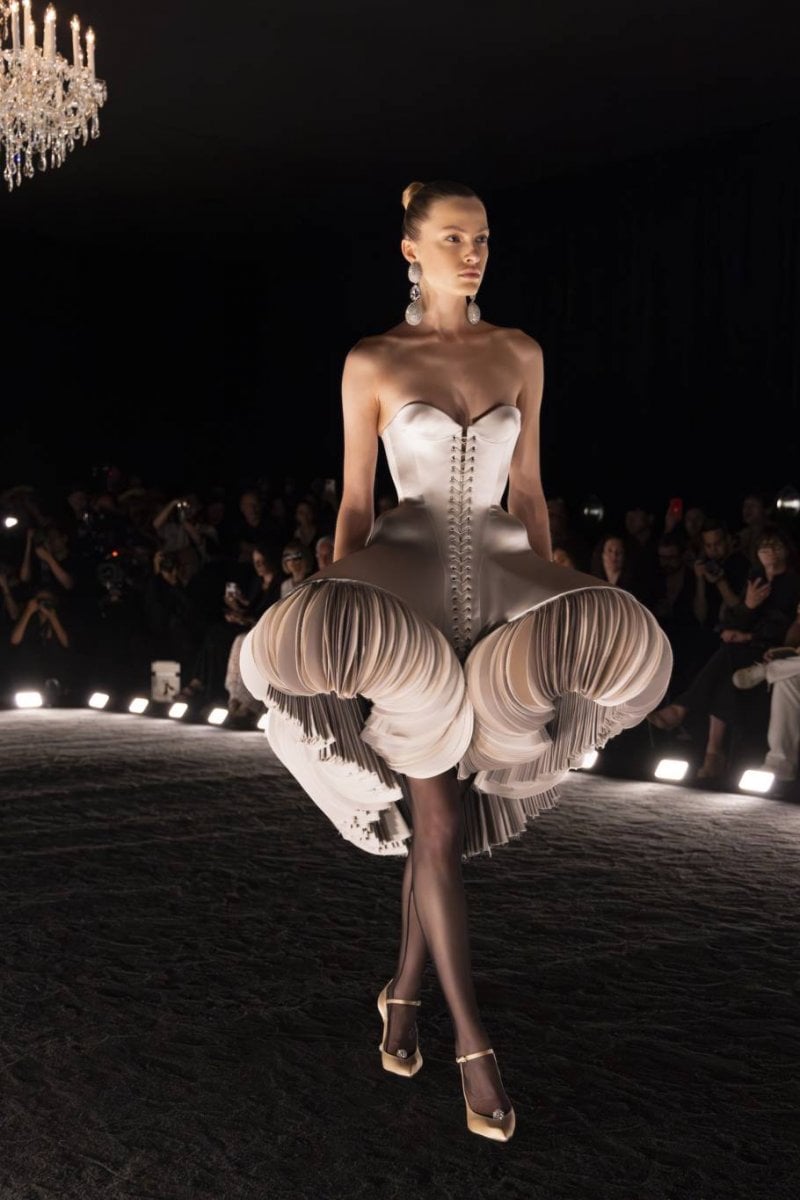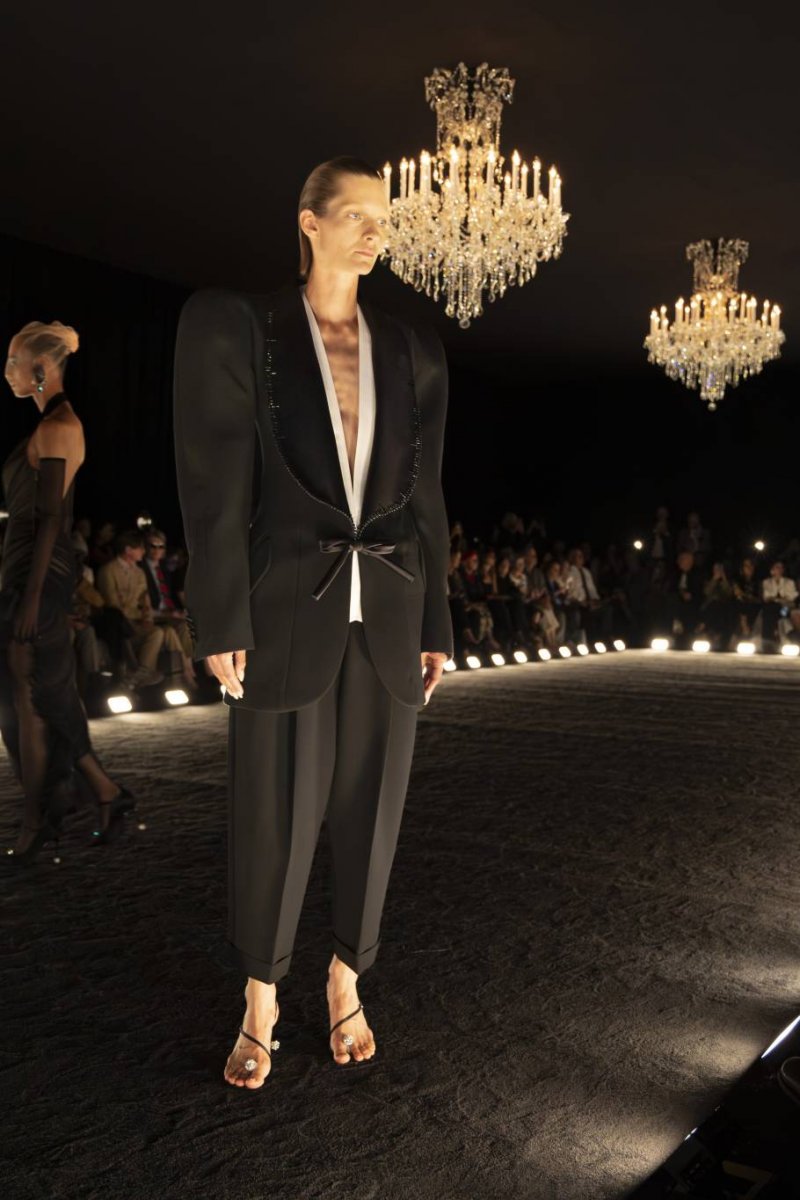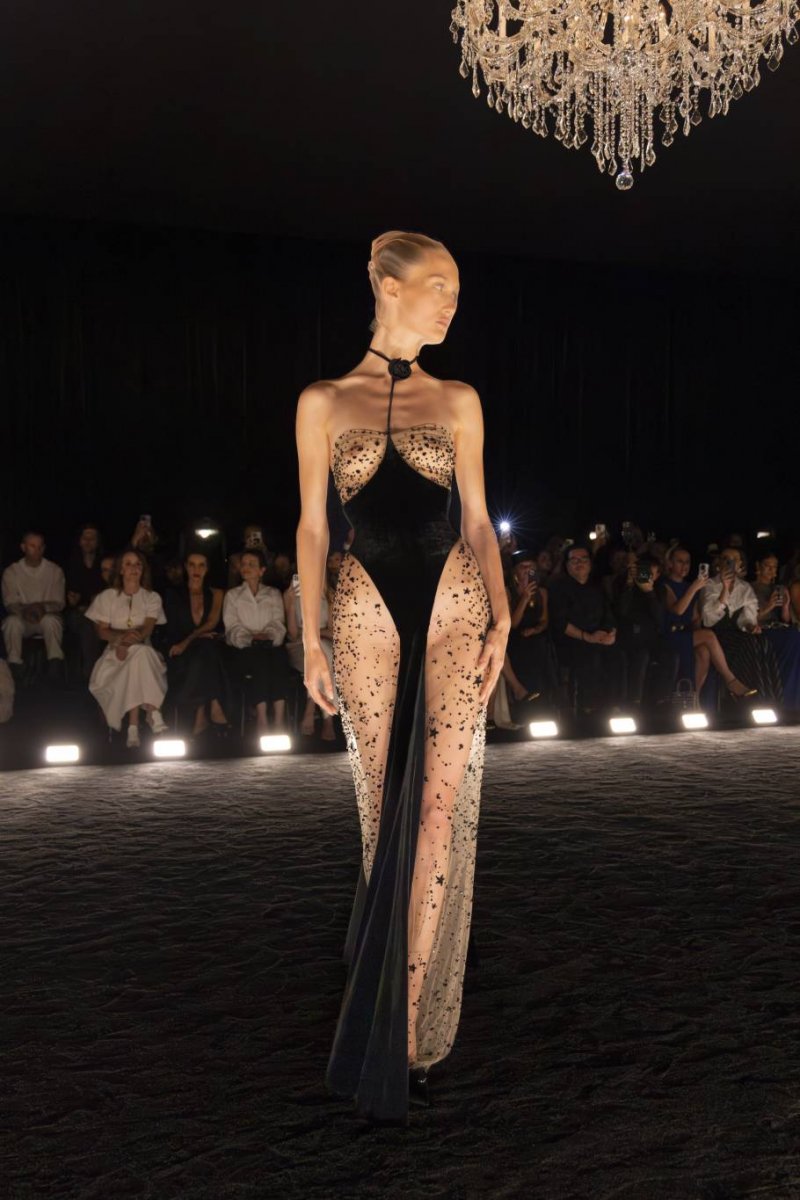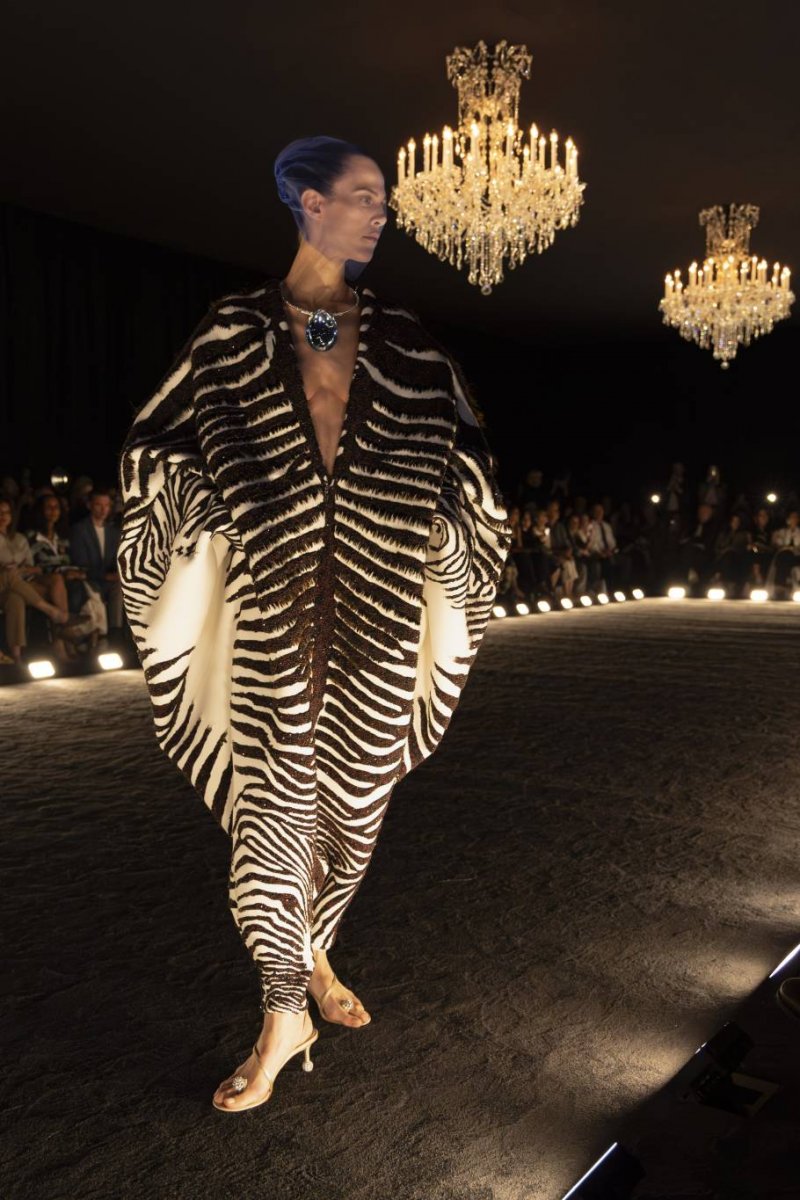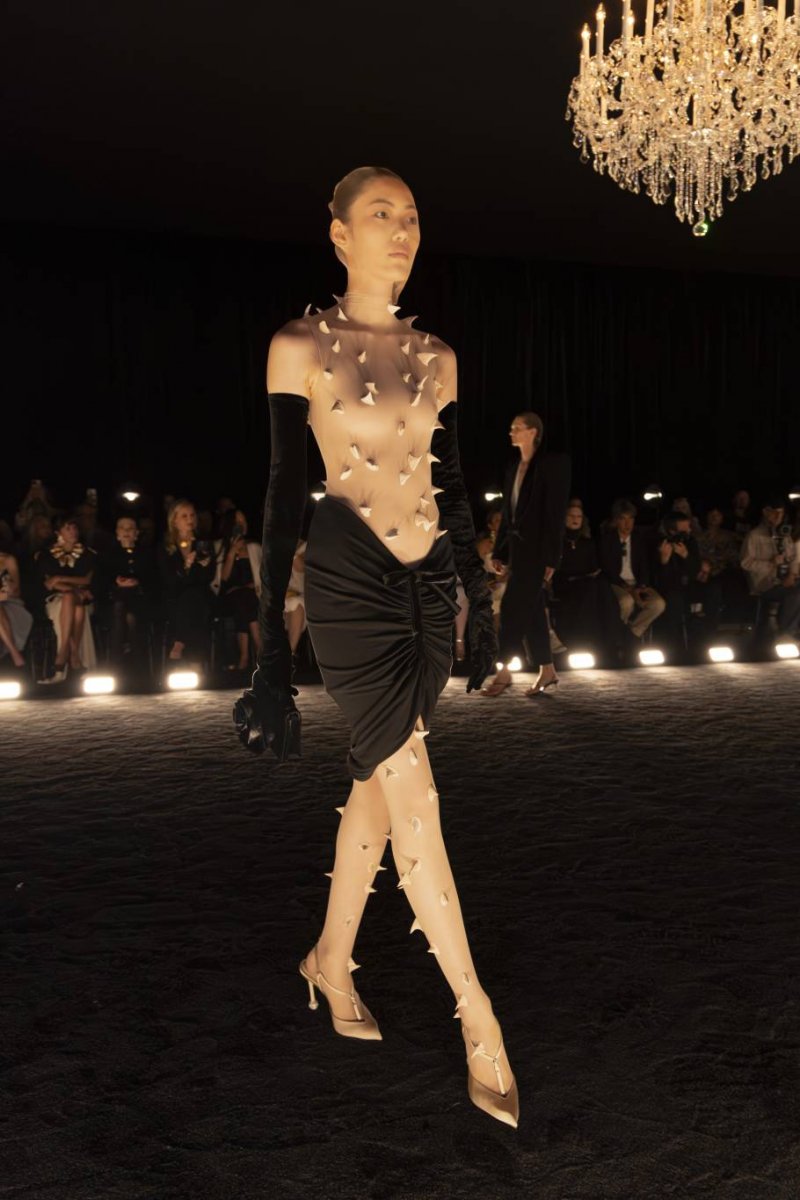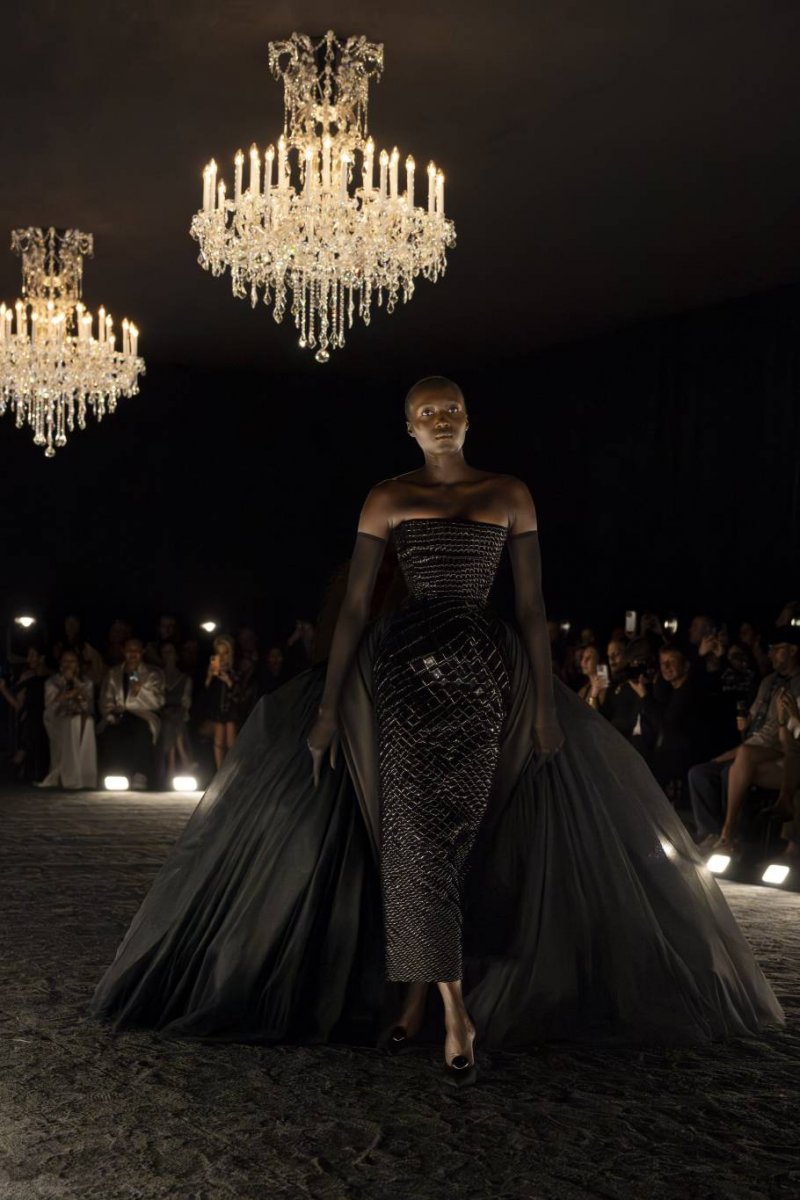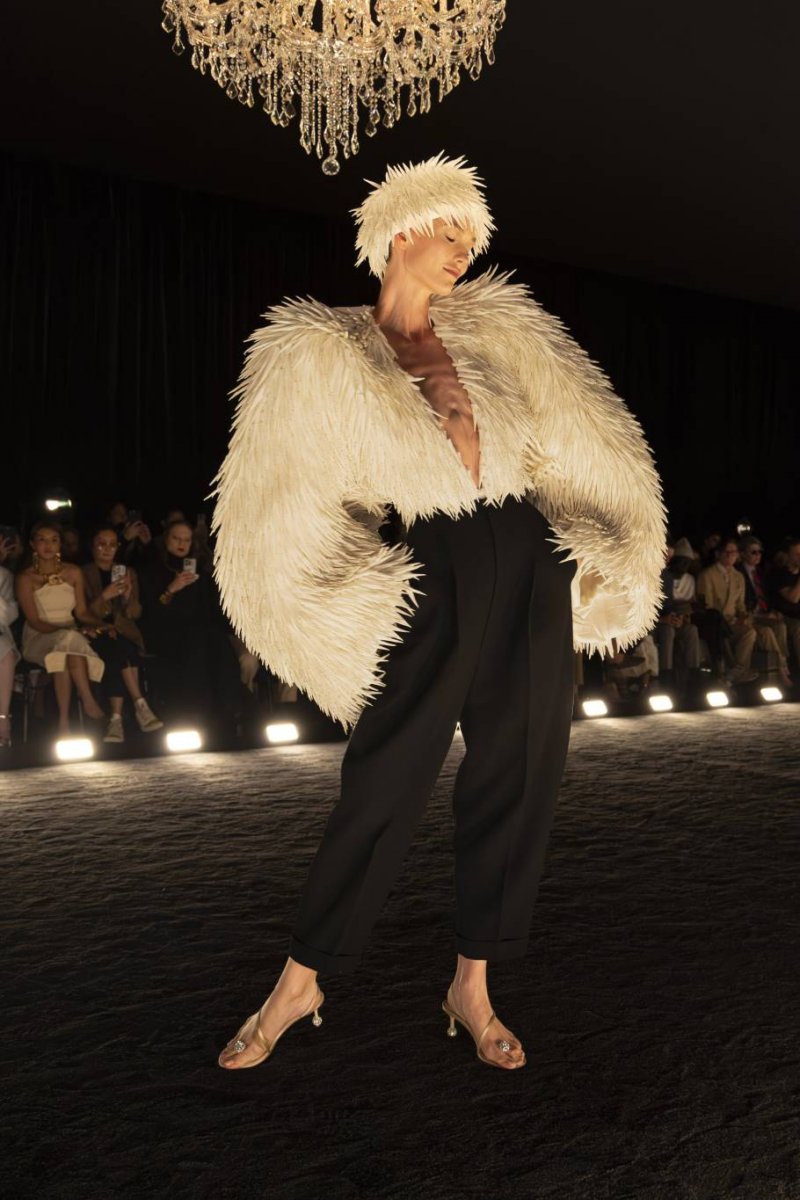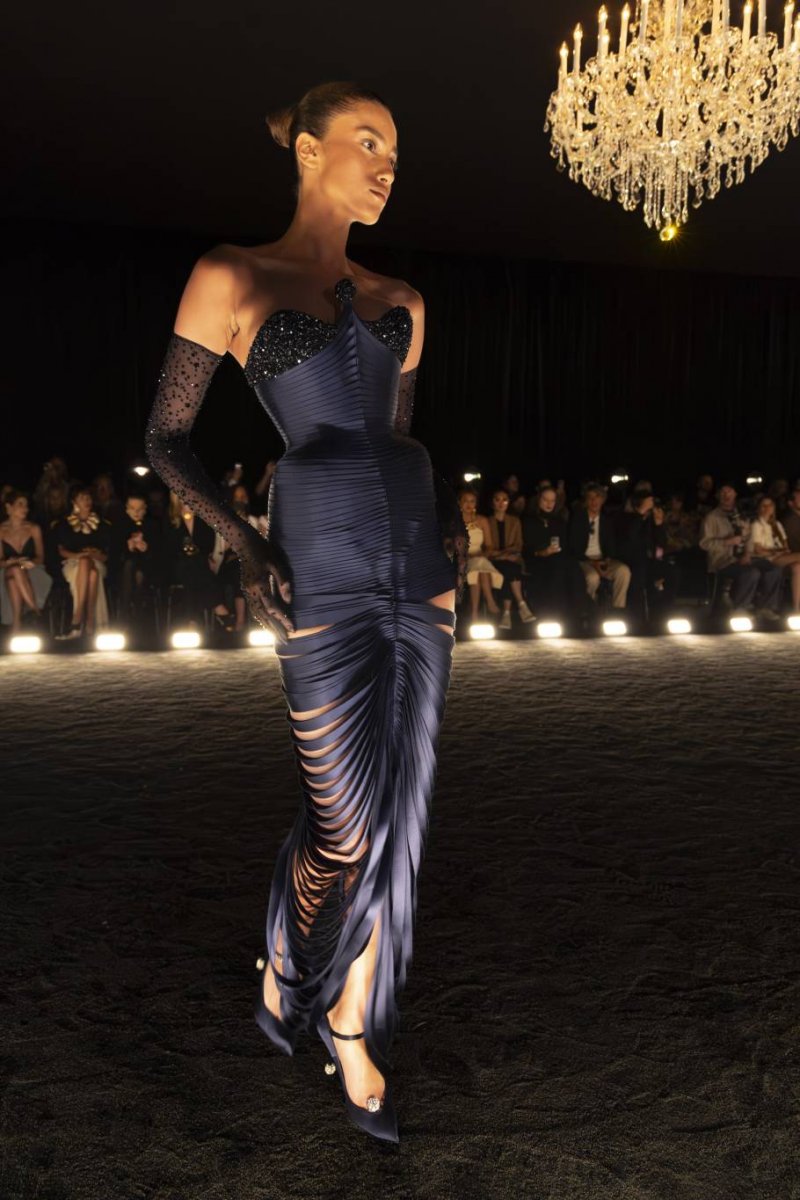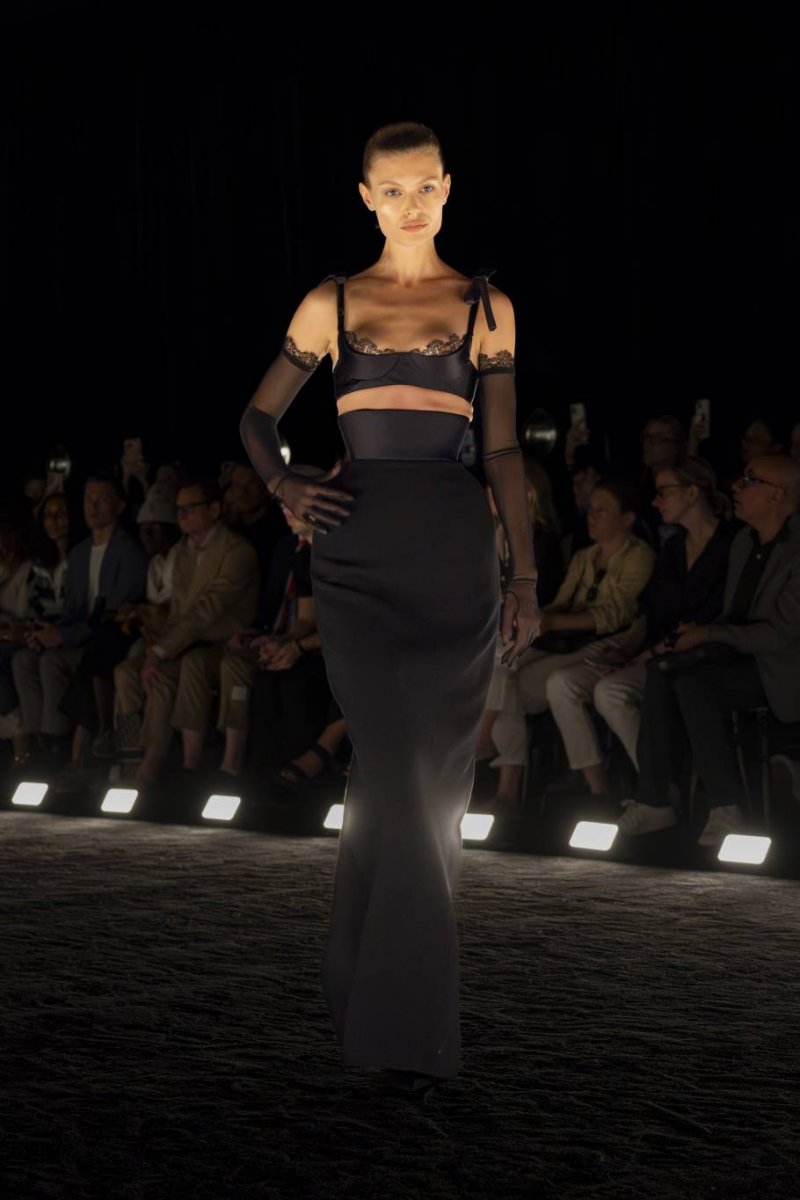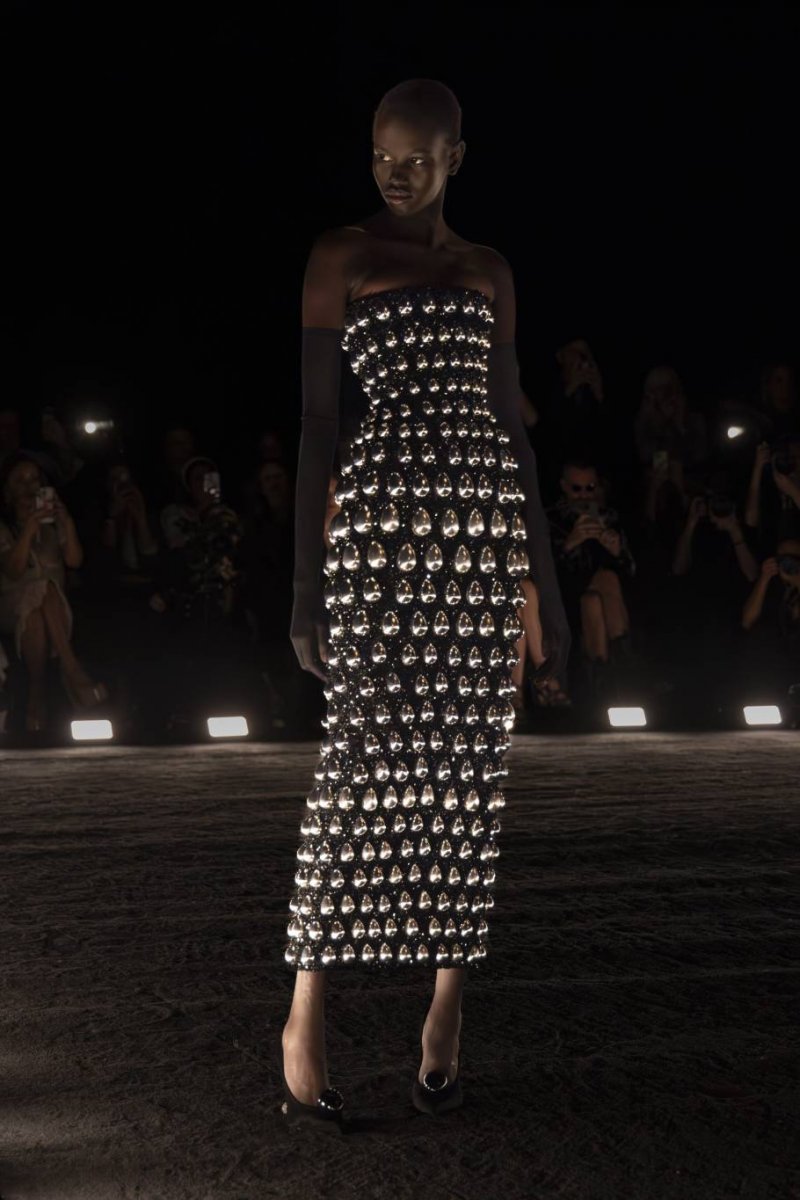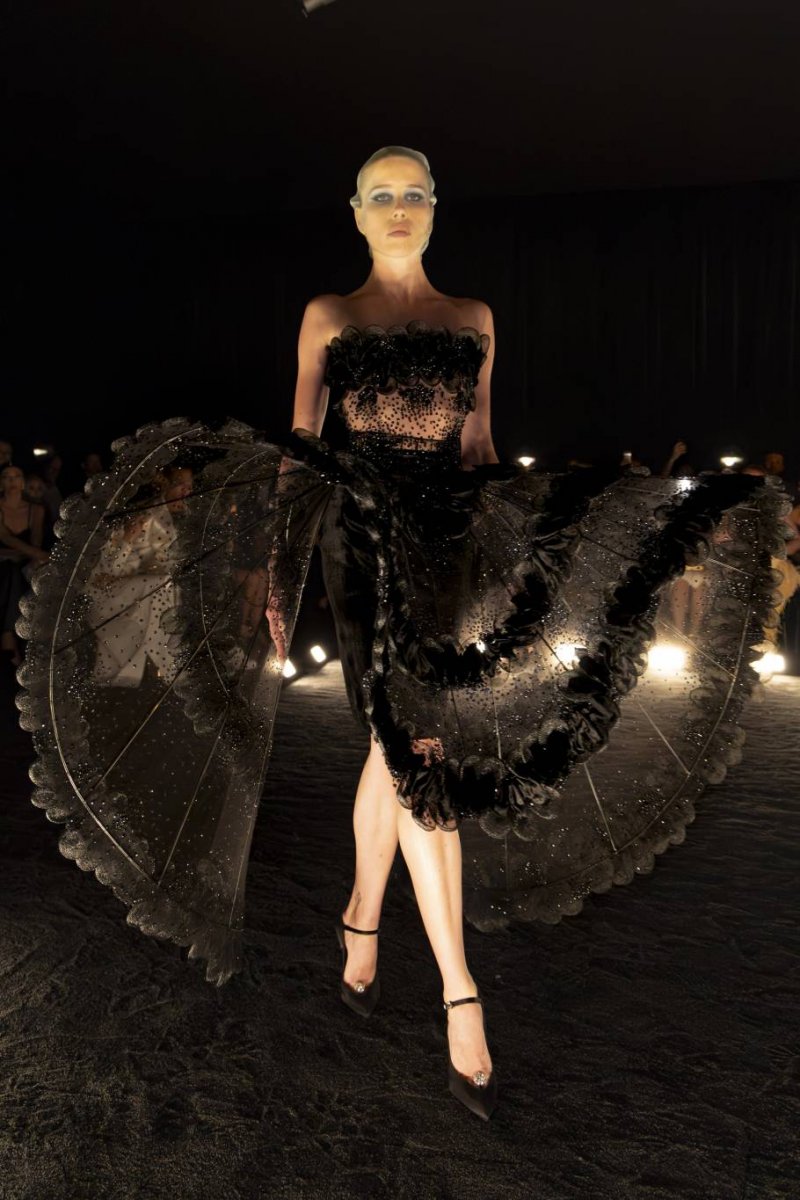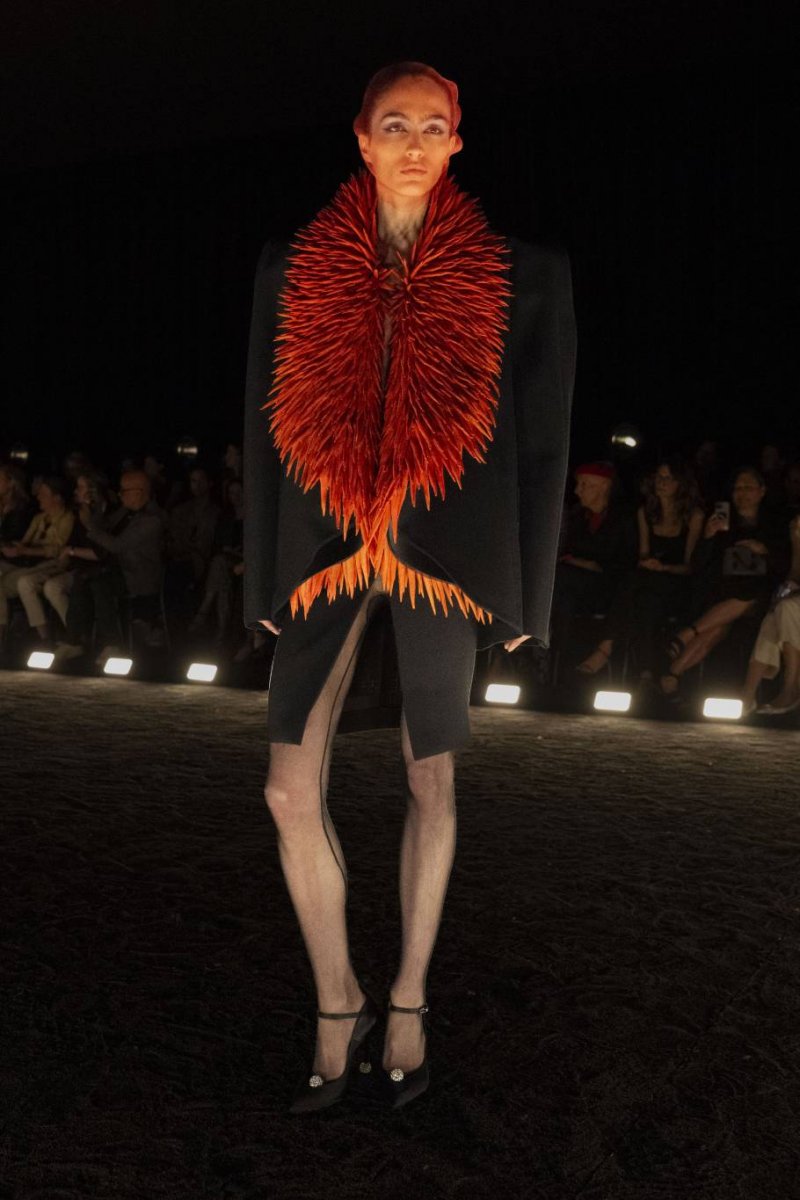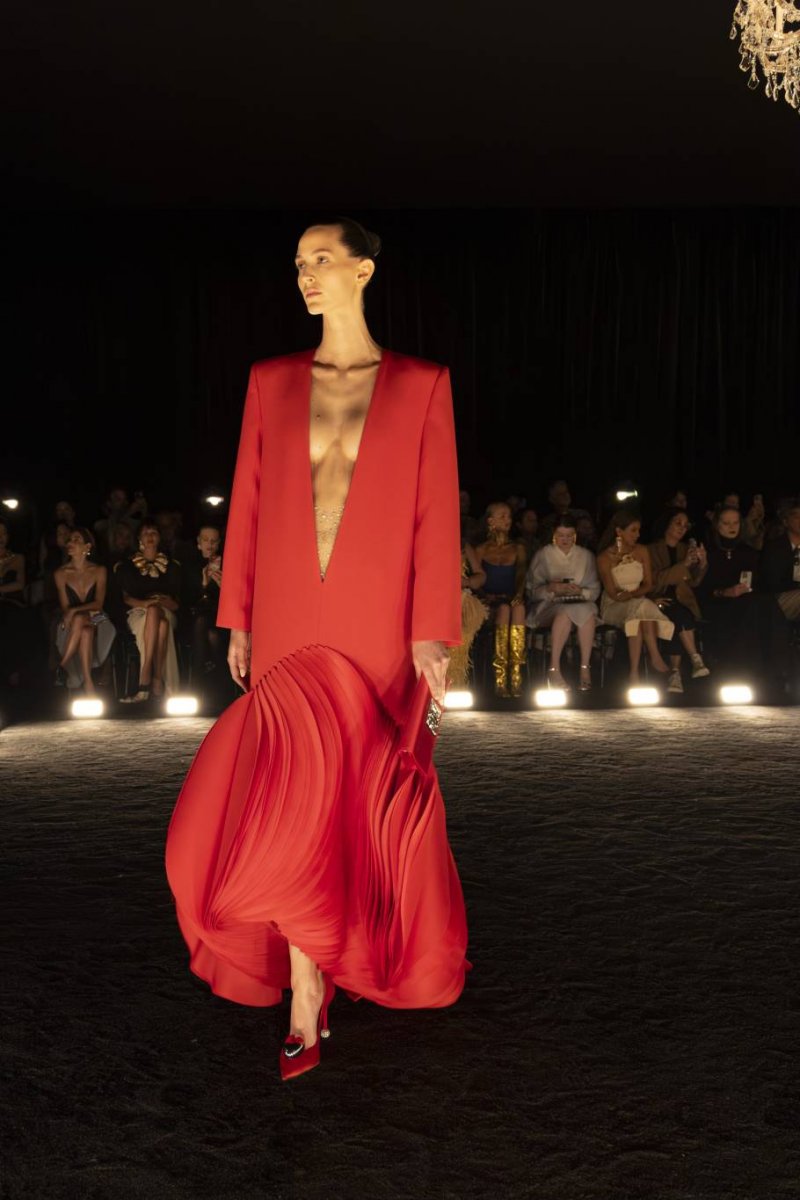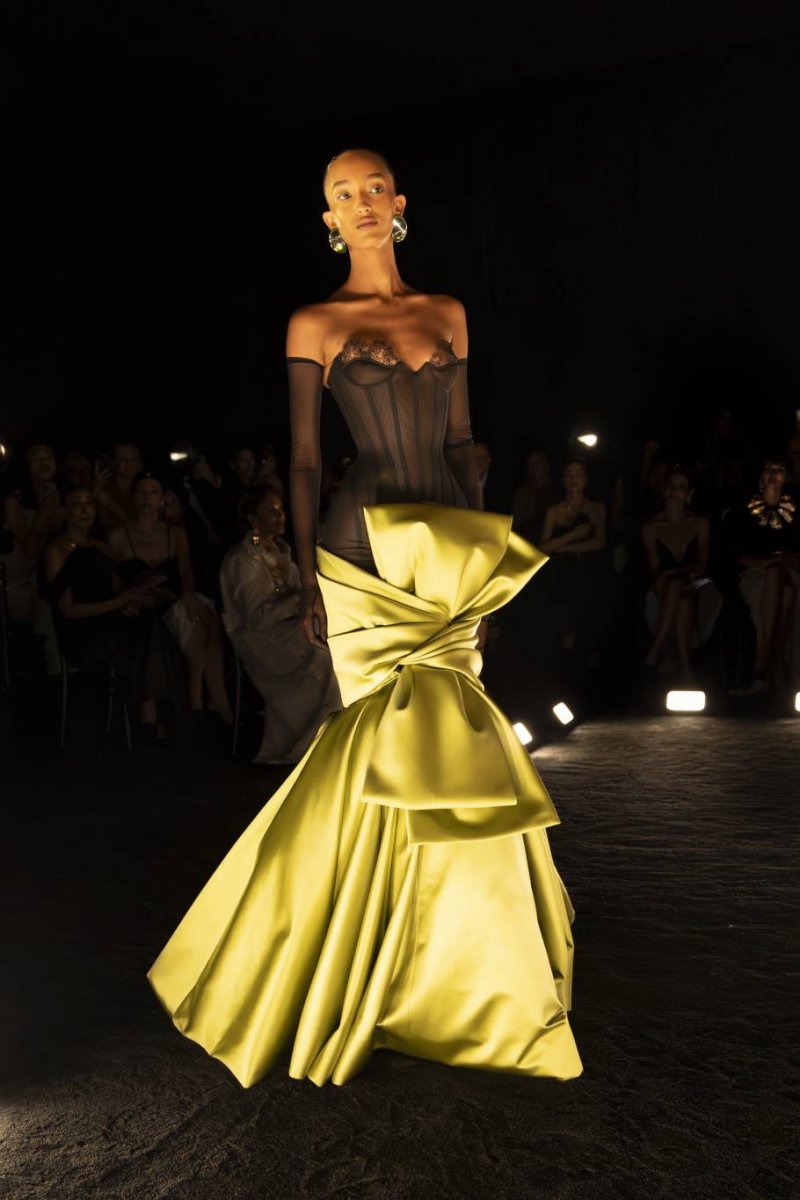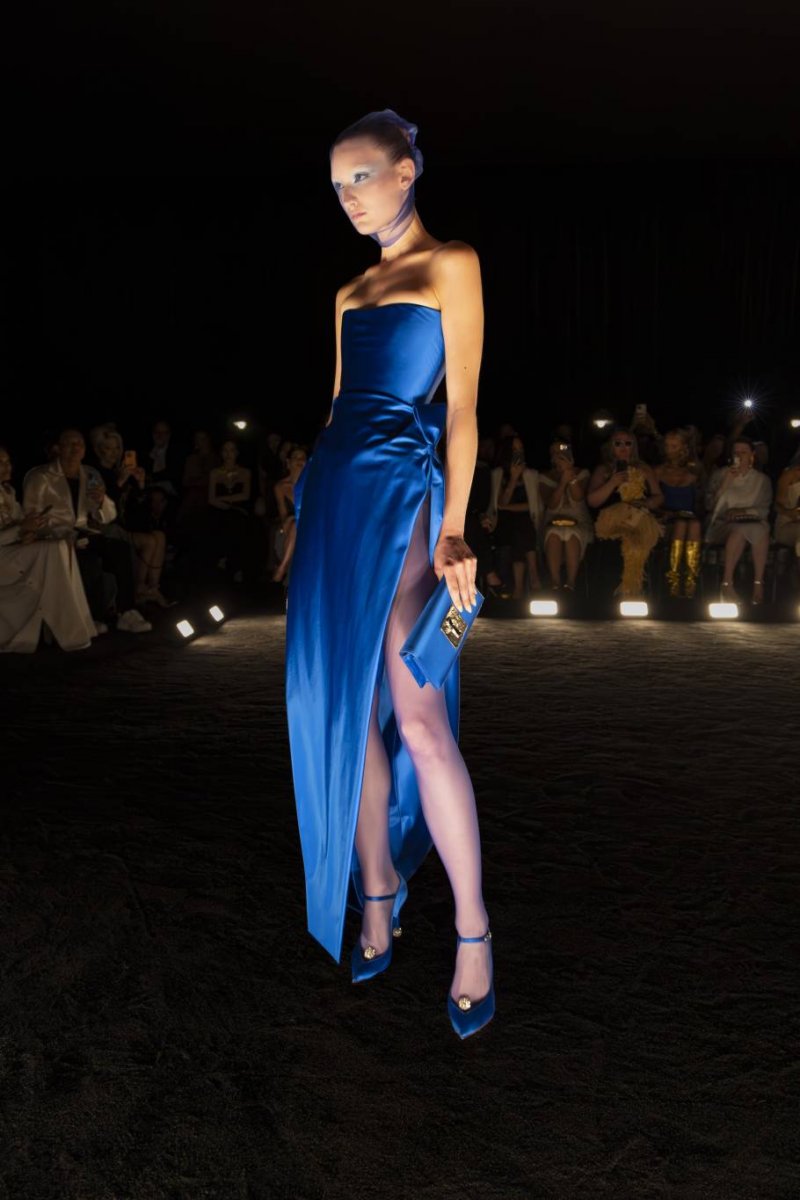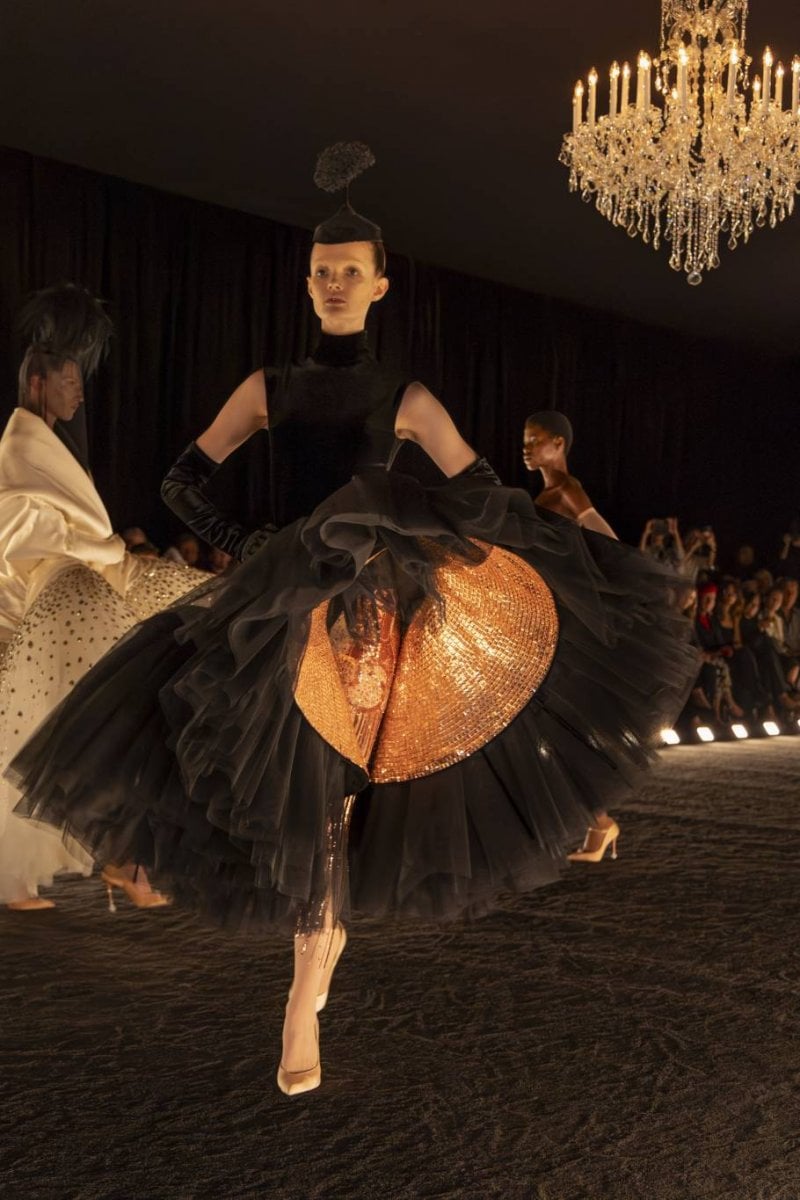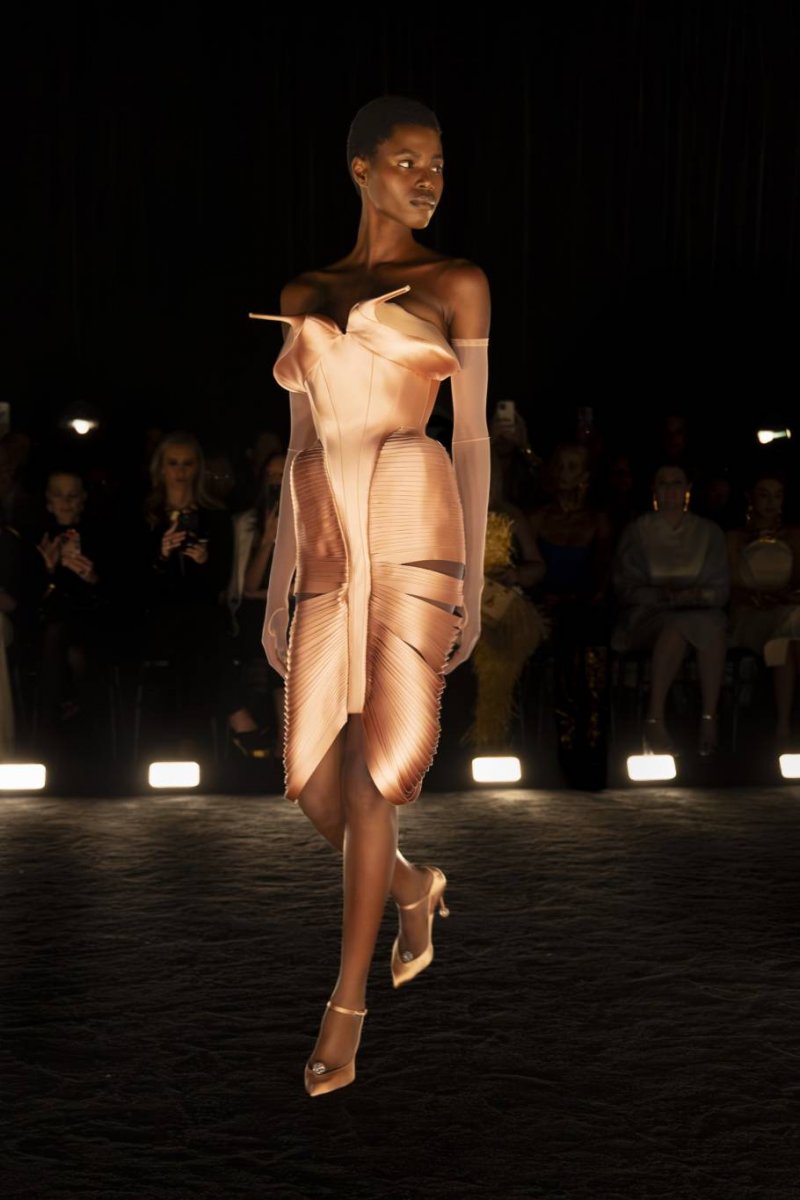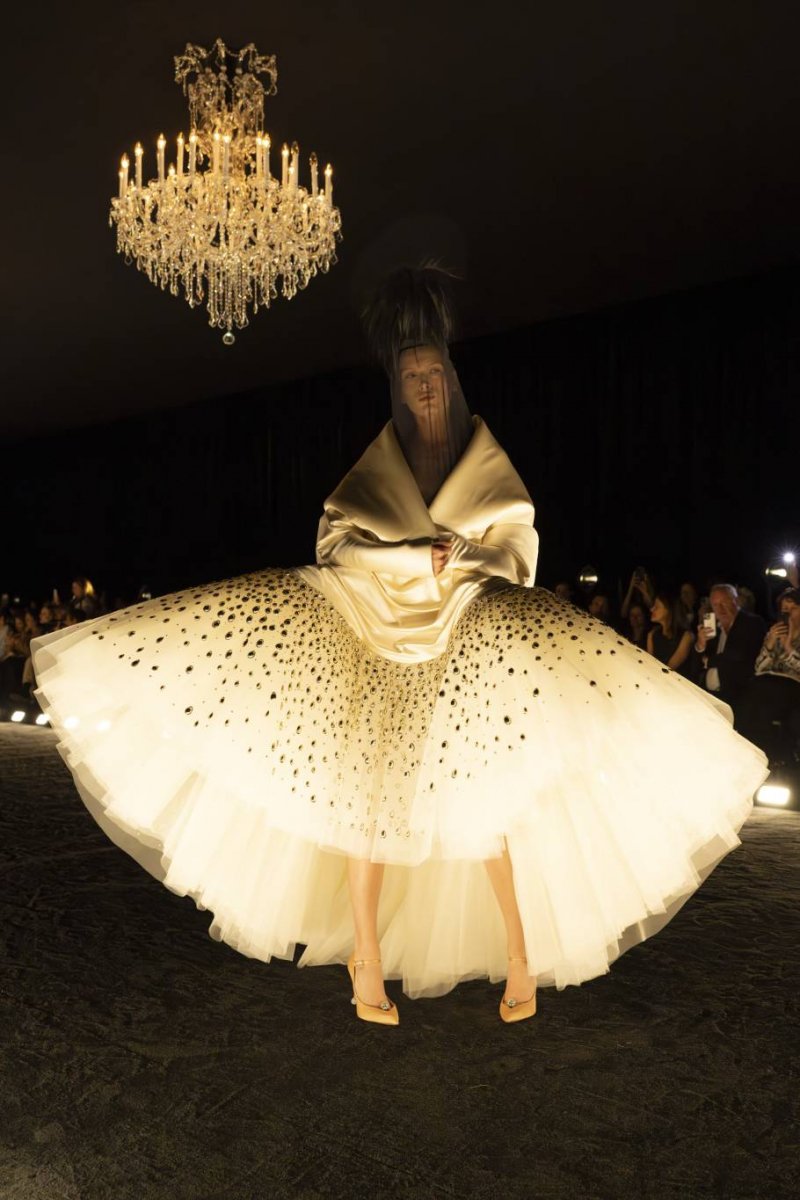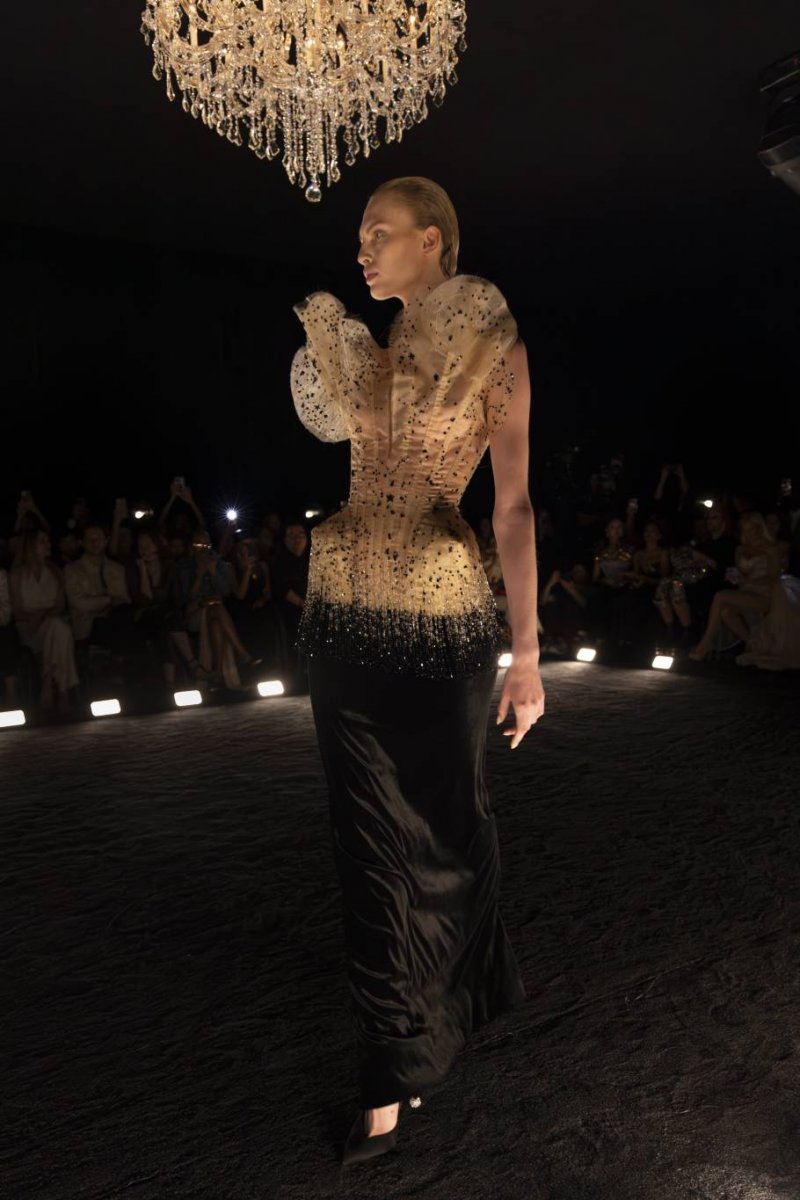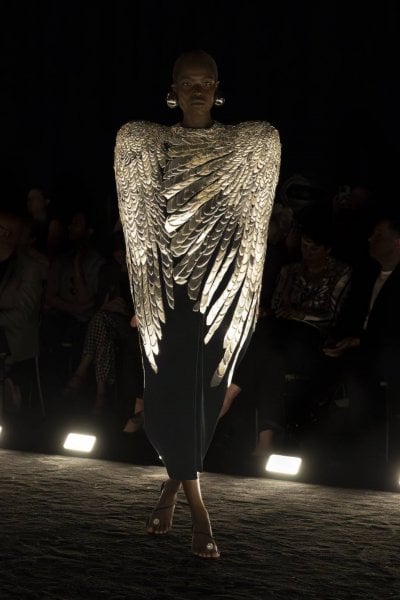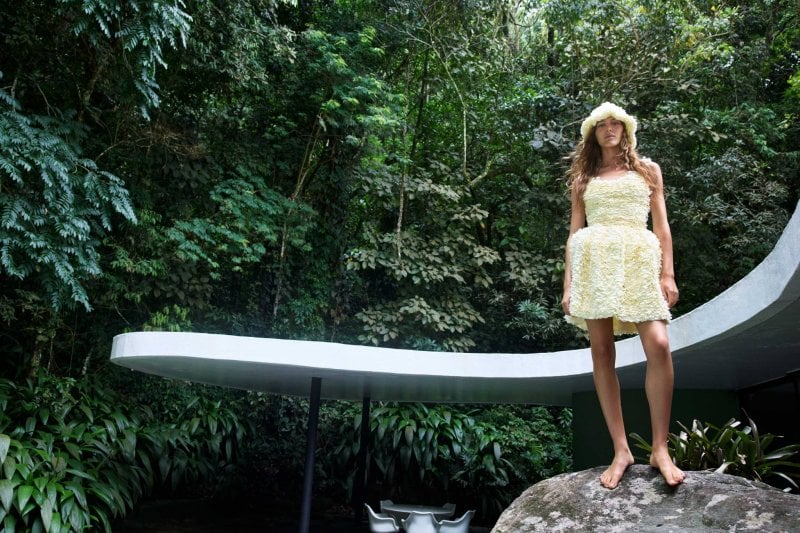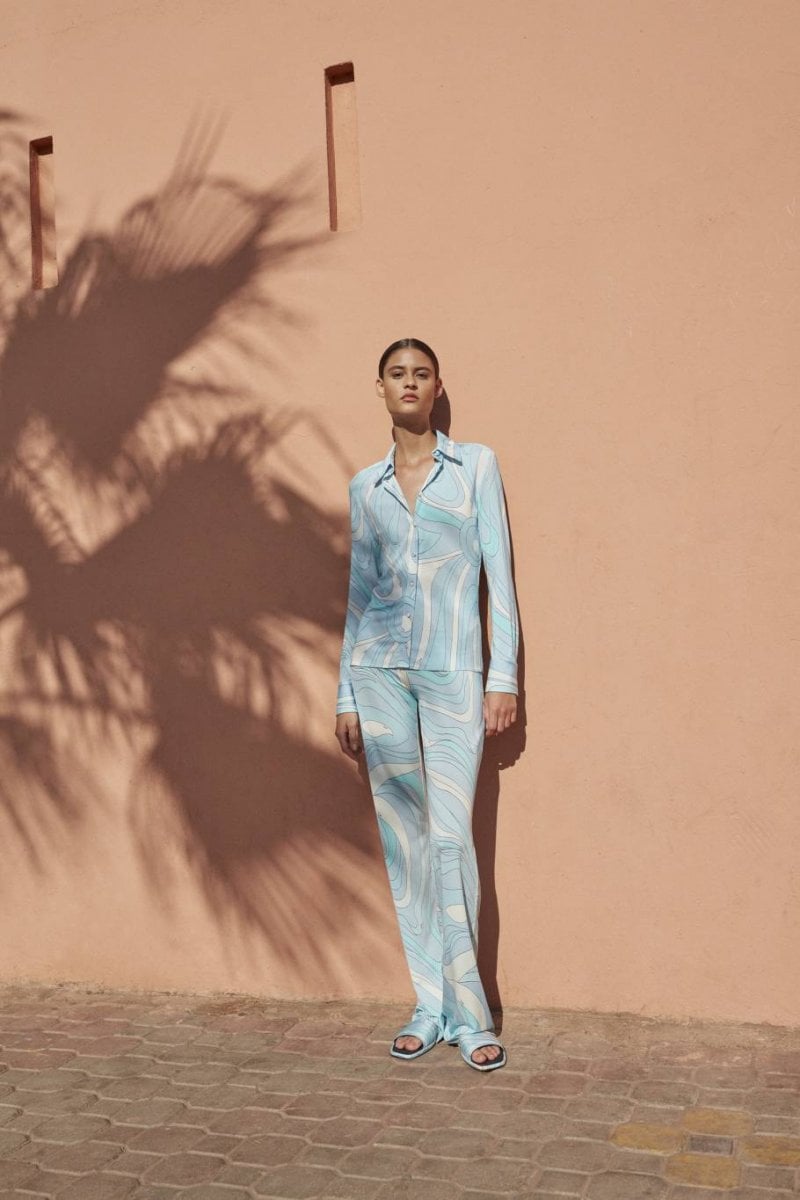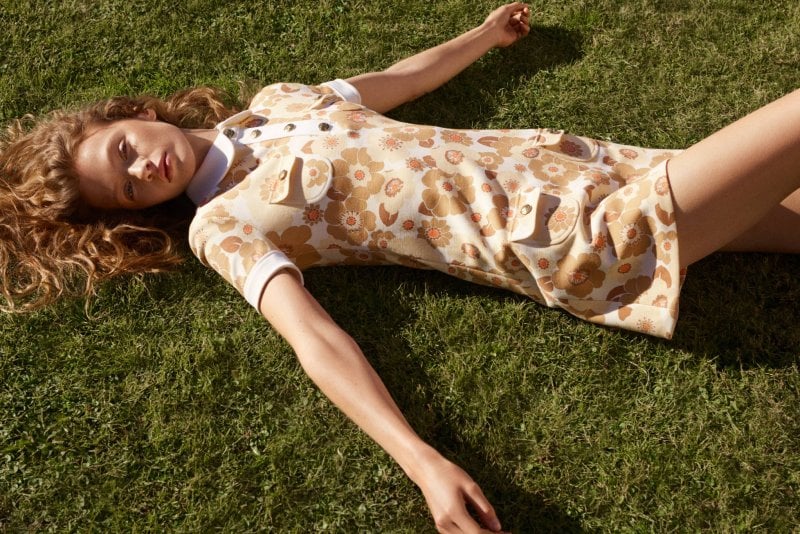Elsa Schiaparelli’s reputation as a shape-shifting entrepreneur who blurs the lines between fashion and art and life and art was already made by March 1932. She was a glorious enigma, shocking for her freedom and her apparent inability to care about convention. Nine years later, Schiaparelli wore to the opening gala of the Ambassadeurs restaurant in Paris a gown painted by Dunand, with a coq-feathered stole smartly wrapped around her shoulders. This memorable look was a tribute to the great ballerina Anna Pavlova who had died that same year. With Pavlova being known for her iconic performance in “The Dying Swan”, Schiaparelli was a phoenix with a ceaseless ability to reinvent not only herself, but fashion too.
To create this collection, Daniel Roseberry took this context as a starting point and honored Elsa’s singular gift for rebirth. Each piece is clear in its silhouette and its technique, and each look is an expression of a certain emotion – even if it was one that is deeply controlled as expressed by Hemingway. The marvels, as well as the details, were meant to catch the eye and hold it – be it a gown, a bustier, a shoe, a piece of folded velvet feather or a triple organza spike. However, it was not only about the creations, but also about the larger design – the mystifying and continuously expanding universe of Maison Schiaparelli.
“People don’t buy Schiaparelli, they collect it,” as was told Daniel Roseberry. Through this mesmerizing collection, the designer expressed his vision for the Maison today and honored the close relationship between client and creation that makes Haute Couture so special. It’s his way to give the women of today the power to be reborn.






